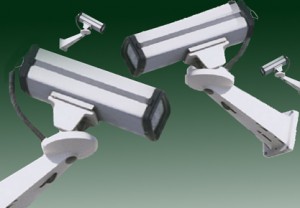
By Matthew A. Daecher
 Cameras are growing increasingly pervasive in today’s society and now include cell phone cameras, security cameras, intersection/red light cameras and video recorders that capture entire segments of time.
Cameras are growing increasingly pervasive in today’s society and now include cell phone cameras, security cameras, intersection/red light cameras and video recorders that capture entire segments of time.
In the transportation industry, cameras and recorders have always played a part in safety and risk management programs to document collision damage to vehicles and collision scenes in general. These types of photographs are important in competently managing insurance and injury claim outcomes.
More recently accident event recorders have become common in passenger transportation operations. These instruments further help in managing the outcomes of collisions by providing snapshots of time before and after the events in question and help identify their causes. Event recorders installed in their fleet vehicles are also proving successful in the management of driver behavior when operators use the technology to its fullest potential.
While it is becoming more common to use camera and video technology in collision investigations, my experience tells me this is not the case for injury investigations.
Over the past several years, bus and coach operators have invested millions of dollars in federal security grant monies and millions more in private funding on security enhancements in passenger transportation operations. A substantial portion of these monies has gone to installing surveillance equipment, including facility-based cameras that monitor many areas inside and outside the facility. Unfortunately, much of this investment is under-utilized when it comes to injury investigations.
A typical approach to workplace and worker injuries is to send the employee to a medical facility, submit a claim with the insurance company, and wait until the treating medical professionals release the employee to part-time or full-time duty. Many companies taking this approach miss the opportunity to fully investigate the injury and properly manage the outcome of the claim.
As with any collision investigation, a full injury investigation requires similar detailed steps, which should include documentation of any alleged defects or unsafe situations.
An example would be when a person incurs an injury stepping off a bus and alleges defects on step treading as the cause. A complete investigation should include photographic documentation of the actual state of the treading. If the treading is insufficient, this photographic evidence can alert maintenance personnel and drivers to repair similarly defective treading in the fleet. Where there is no defect with the treading, the documentation may help in the defense of the injury claim, proving sufficient doubt that it actually contributed to the injury.
As another example, let’s assume the injured party in this incident is the driver. In this case the injury happened at the end of a charter in the vehicle yard and there were no witnesses.
Let’s also assume the employee really did incur an injury stepping off the vehicle and using the available handrail. This sounds like a legitimate injury with nothing to do but ride out the consequences. Without video cameras on the premises, an operator cannot immediate answer affirmatively.
Most safety managers know there are often multiple contributing factors to a collision. This same principle may hold true to injuries, and facility cameras can play a big role in determining the contributing factors. In the above scenario the company with facility-based cameras has the opportunity to review footage to determine if the employee really was using the handrail while exiting the vehicle. As it relates to this injury, such documentation may not alter the outcome of the claim either way. However, the operator could hold the injured employee accountable for violating established safe work practices, and the company could use the incident as a training topic during an upcoming safety meeting.
What if the injured party alleged the cause as a slip in the parking lot but a review of the footage indicated no such incident ever occurred? Those with video capability to use and review available surveillance footage in the investigation of on-site injuries should by all means incorporate the technology into the injury investigation procedure.
Matthew A. Daecher is president and CEO of Daecher Consulting Group, Inc., Camp Hills, PA.
